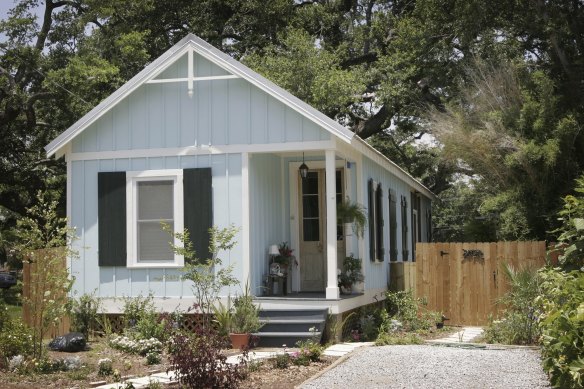- Analysis
- Money
- Tax
- Retirement living
The tough conversations you need to have before living in a granny flat
By Rachel Lane
When most people hear the words “granny flat” they think of a small self-contained dwelling in a backyard. While that is the real estate definition, a granny flat arrangement can apply to all or part of a home or a separate dwelling. Essentially, a granny flat arrangement gives you a right to occupy a property that you do not own for life.
The most common ways granny flat arrangements are created are: by the parents selling their home and paying for a granny flat to be built in the backyard of their children’s home; the children and parents both selling their homes and using the proceeds to buy a new home in the children’s name; or by the parents transferring their home for the right to live there or in another home under a granny flat arrangement.

There can be lots of excitement about creating a granny flat arrangement, but it’s important to have some tough conversations first.Credit: iStock
While these arrangements are typically between children and parents who live together, they don’t have to be. You can have a granny flat with family or friends, and you don’t have to live in the same property as them.
In 2021, the federal government removed the capital gains tax (CGT) liability from granny flat arrangements if you meet certain criteria. To be eligible for the CGT exemption, the property owners must be individuals (not a trust or company), the person occupying the granny flat must have reached the pension age (67 years) or have a disability that means they need support for at least the next year.
In addition, the granny flat agreement must be documented in writing, be intended to be legally binding and not commercial in nature.
There can be lots of excitement about creating a granny flat arrangement, but it’s important to realise that these arrangements are intended to last a lifetime.
You need to have some tough conversations about the issues you might encounter over the journey, from the day-to-day responsibilities of bills, housework and meals through to scenarios under which the arrangement might change or end, such as if the children get divorced or pass away or if the parents need aged care.
While many state governments have removed planning restrictions to make it easier to build a granny flat, if you don’t meet the exemption criteria you could get a nasty surprise.
For some children, the CGT surprise comes when they lodge their tax return and find they owe hundreds of thousands of dollars for creating a granny flat arrangement.
For others, the surprise comes years down the track when the home is sold, and they discover the granny flat is not covered by the main residence CGT exemption. If you are a child thinking about entering into a granny flat arrangement, tax implications are just one of the important financial considerations.
Granny flats can have serious financial implications for grandparents too, with cash flow, pension entitlement, aged care costs and estate planning all requiring thought and planning. Before you rush into a granny flat arrangement, it’s a good idea to seek advice.
Rachel Lane is the author of the bestselling book Aged Care, Who Cares? and Downsizing Made Simple with fellow finance expert Noel Whittaker. The new edition of Downsizing Made Simple is now available online.
- Advice given in this article is general in nature and is not intended to influence readers’ decisions about investing or financial products. They should always seek their own professional advice that takes into account their own personal circumstances before making financial decisions.
Expert tips on how to save, invest and make the most of your money delivered to your inbox every Sunday. Sign up for our Real Money newsletter.